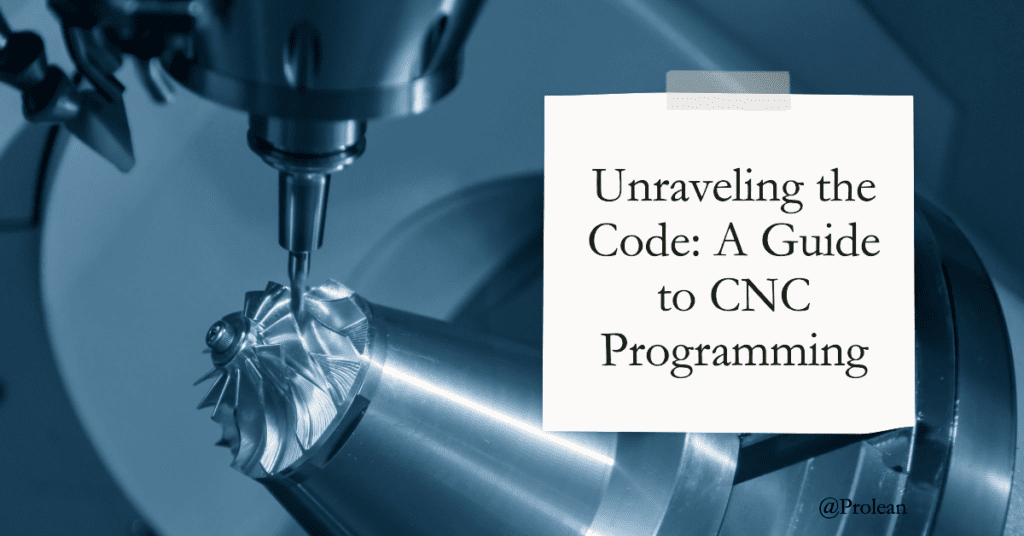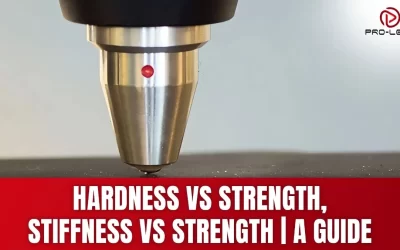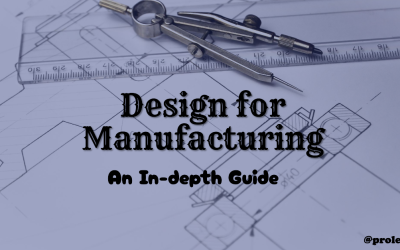
Computer Numerical Control (CNC) programming has revolutionized the manufacturing industry, taking it into the era of automation. From automotive to aerospace, CNC programming plays a critical role in various sectors, enabling the production of complex and high-quality parts with remarkable precision and speed. A programmed CNC machine follows the set instructions without the need for manual intervention, thereby reducing the chance of human errors and increasing efficiency.
In this comprehensive guide, we will take you through the nuances of CNC programming, providing valuable insights into each step of the process.
Understanding the Basics of CNC Programming
Before delving into CNC programming’s nitty-gritty, it’s essential to understand its basic elements: the G-codes and M-codes. These coded instructions form the backbone of CNC programming, directing the machine tool’s movement and functions.
1. G-Codes
G-codes, or preparatory codes, tell the machine what kind of action to perform. Actions can include moving in a specific direction (linear or circular interpolation), dwelling (pausing at a particular point), or even setting the work coordinate system.
Table 1: Common G-Codes in CNC Programming
| G-Code | Description |
|---|---|
| G00 | Rapid move |
| G01 | Linear interpolation |
| G02 | Clockwise circular interpolation |
| G03 | Counterclockwise circular interpolation |
| G04 | Dwell |
| G90 | Absolute programming |
| G91 | Incremental programming |
Read more: CNC G Code: Definition, Example, and Code List
2. M-Codes
While G-codes primarily deal with the machine tool’s movement, M-codes or miscellaneous function codes handle various machine functions like tool changes, coolant activation or deactivation, and machine start and stop.
Table 2: Common M-Codes in CNC Programming
| M-Code | Description |
|---|---|
| M00 | Program stop |
| M01 | Optional stop |
| M02 | Program end |
| M03 | Spindle start (clockwise) |
| M04 | Spindle start (counterclockwise) |
| M05 | Spindle stop |
| M06 | Tool change |
While the specific G-codes and M-codes may vary based on the CNC machine type and the control system, the concept remains consistent.
Interpreting the CAD Drawing
The first active step in CNC programming involves interpreting the CAD (Computer-Aided Design) drawing. The CAD software allows the design engineer to create a 3D model of the part that needs to be manufactured, providing an elaborate blueprint for the CNC program.
This step involves a thorough understanding of the design, including:
- Dimensions: The size and tolerances of the part.
- Geometrical Features: The shape and profile of the part.
- Surface Finish: The texture and roughness of the part’s surface.
Understanding CAD drawing is crucial as it forms the basis of the CNC program. Misinterpretation can lead to production errors, resulting in wasted time, material, and effort. Thus, ensuring the accurate interpretation of the CAD design is crucial for effective CNC programming.
Selection of the Appropriate Tools
After interpreting the CAD drawing, the next step involves selecting the appropriate tools required for the machining process. This step is vital as the tools determine the type of operations that can be performed, the machining time, and the surface finish.
1. Considerations for Tool Selection
Choosing the correct tool requires careful consideration of several factors:
- Material of the Part: Harder materials may require stronger, more durable tools.
- Part Geometry: Complex designs might need specialized tools.
- Surface Finish: Certain tools can provide better surface finishes than others.
Table 3: Common CNC Tools and Their Applications
| Tool | Description |
|---|---|
| End Mills | Used for creating a variety of features including pockets, slots, and contours. |
| Drill Bits | Used for drilling holes in the workpiece. |
| Lathe Tools | Used in turning operations to remove material from the workpiece. |
| Taps and Dies | Used for creating threads. |
Defining the Tool Paths for Machining
Defining the tool paths is a critical step in CNC programming. This process involves determining the path that the tool will follow during the machining process. The tool path is directly influenced by the part’s geometry and the selected tool, affecting the machining time, the tool’s wear and tear, and the part’s final quality.
1. Strategies for Tool Path Definition
- Roughing Strategy: This involves removing the bulk of the material, typically at a faster rate than the finishing pass. The ultimate goal is to shape the workpiece as close to the desired final dimensions as possible, while minimizing tool wear and maintaining tolerances. This can involve various techniques, such as high-speed machining or trochoidal milling.
- Finishing Strategy: Once the roughing pass has been completed, the finishing pass can be performed to achieve the desired surface finish and dimensional accuracy. This can involve techniques such as contouring or profile milling, and may require the use of specialized tooling or machining parameters to achieve the desired results. The finishing pass is critical to achieving the final desired part geometry and ensuring that the workpiece meets all necessary specifications.
2. Simulation of the CNC Program
Before running the CNC program on the actual machine, it is simulated on a computer to ensure its correctness. This step helps to identify any potential errors or collisions that might occur during the machining process.
Benefits of CNC Program Simulation
- Detecting and correcting errors before actual machining, saving time and materials.
- Verifying the correctness of the tool paths and the machining time.
- Minimizing the risk of tool collision and damage to the machine.
Try Prolean Now!
Execution and Validation of the CNC Program
The final step involves executing the CNC program on the actual machine. Once the program is run and the part is produced, it’s crucial to validate that the part matches the original CAD design. This can be done using various inspection methods, such as visual inspection, dimensional inspection, or using a CMM (Coordinate Measuring Machine).
1. Post-Machining Inspection
- Visual Inspection: Checking for visible defects.
- Dimensional Inspection: Measuring the dimensions of the part and comparing them to the original design.
- CMM Inspection: Using a Coordinate Measuring Machine to measure complex geometries and compare them to the CAD model.
Upon completion of these steps, the CNC programming process comes to an end. This meticulous process ensures that the produced parts are of high quality, precise, and identical to the original design. Understanding these steps can provide valuable insights into the world of CNC programming and its significance in today’s manufacturing landscape.
Prolean’s CNC Machining Services: Making the Difference
At Prolean, we leverage our understanding and expertise in CNC programming to provide exceptional CNC machining services. Our CNC programmers have an in-depth understanding of the critical steps involved in CNC programming, ensuring high quality and precision in every product we manufacture.
We are equipped with advanced CNC machines, and proficient in handling a variety of materials. Our commitment to quality and efficiency, combined with our comprehensive understanding of CNC programming, makes us a reliable partner in your manufacturing journey. By choosing Prolean’s CNC Machining Services, you are choosing high-quality, precision, and efficiency.
Conclusion
CNC Programming is an integral part of modern manufacturing processes. It transforms design blueprints into tangible, high-quality products. It necessitates a series of meticulously executed steps, beginning with understanding the basics of CNC programming, interpreting CAD drawings, selecting the right tools, defining tool paths, running simulations, and eventually executing the program. Each stage is pivotal and impacts the product’s quality, precision, and efficiency.
At Prolean, we’ve harnessed the power of CNC programming in our advanced machining services. Our commitment to quality control and meticulousness ensures that we offer high-quality, precise, and efficient CNC machining services that meet and exceed client expectations.
FAQs
What is CNC programming, and why is it important?
CNC programming is a process that converts design plans into instructions for CNC machines. It is crucial in manufacturing, as it directs the machine on how to create the part, ensuring high precision and repeatability.
What are the steps involved in CNC programming?
CNC programming involves understanding the basics, interpreting the CAD drawing, selecting the appropriate tools, defining tool paths, simulating the CNC program, and finally, executing and validating the CNC program.
What is a tool path in CNC programming?
A tool path in CNC programming refers to the route or path that the cutting tool follows to machine the part from the raw material. It is a critical aspect of CNC programming as it influences machining time, tool wear, and final part quality.
What is the role of simulation in CNC programming?
Simulation is used to validate the CNC program before it is run on the actual machine. It helps in detecting potential errors or collisions, thus saving time, and materials, and preventing possible damage to the machine.
Why is CNC programming important in modern manufacturing?
CNC programming is essential in modern manufacturing as it allows for high precision, repeatability, and efficiency. It enables the creation of complex parts and components, paving the way for innovation and advanced manufacturing capabilities.




Während ich an einem komplexen Projekt arbeitete, suchte ich nach tieferem Wissen über CNC-Programmierung und stieß auf diesen Leitfaden. Der Abschnitt über G-Codes und M-Codes war für mich besonders aufschlussreich. Es wurde mir klar, wie wichtig diese codierten Anweisungen für die CNC-Programmierung sind. Dank dieses Artikels konnte ich meine CNC-Maschine effizient programmieren und ein komplexes Teil mit hoher Präzision herstellen.
Vielen Dank für Ihr positives Feedback! Es freut uns zu hören, dass unser Leitfaden Ihnen bei der CNC-Programmierung geholfen hat. G-Codes und M-Codes sind in der Tat entscheidend für den Erfolg und die Präzision der CNC-Bearbeitung. Wenn Sie weitere Fragen oder Anregungen haben, lassen Sie es uns bitte wissen. Viel Erfolg bei Ihren zukünftigen Projekten!